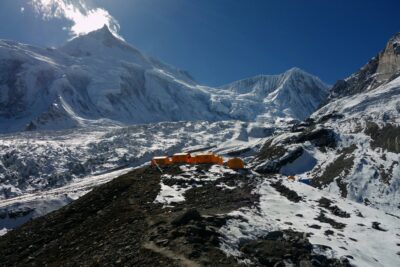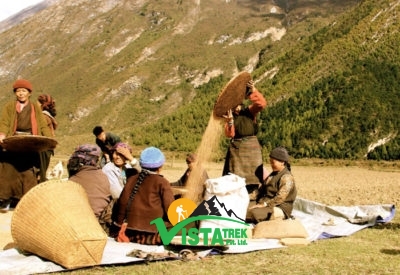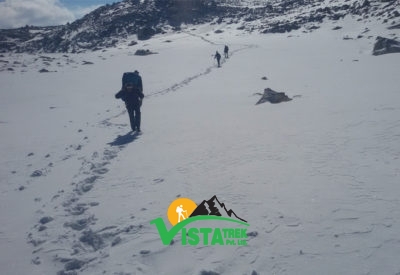Getting its name from the eighth-highest mountain in the world, Mt. Manaslu (8163 m), the Manaslu region is one of the untouched and unraveled beauties in central Nepal. It’s a paradise for adventurers who want to experience raw Himalayan wilderness, cultural richness, and serene solitude away from the commercial trekking routes.
Filled with dense alpine forests, silent glacial lakes, and towering snow-capped peaks, trekking in the Manaslu region offers a magical mix of natural beauty, cultural encounters, and thrilling high-altitude passes. It’s a journey where every step feels like a discovery.
Let’s dive into everything you need to know about this hidden gem of Nepal.
Trekking in the Manaslu region isn’t just about the views—it’s about the experience as a whole. Here’s what makes this region extraordinary:

While Mt. Manaslu (8163 m) is undoubtedly the star of the show, the region is surrounded by several majestic peaks like Ngadi Chuli (7871 m), Himalchuli (7863 m), and Ganesh Himal (7422 m). On clear days, the views stretch far to include the Annapurna Range, forming an awe-inspiring skyline.
These mountains don’t just stand tall—they carry stories of ancient glaciers, brave climbers, and deep spiritual significance. The sheer presence of these mountains makes you feel like you’re walking in a different world.
The Manaslu region only opened to trekkers in 1991, which means it’s relatively new and unspoiled compared to other famous routes. It lies within the Manaslu Conservation Area, established in 1998, and is a shining example of eco-tourism done right.
Here’s what makes it unique:
Eco-tourism here supports both wildlife conservation and the local economy—a win-win for travelers and nature alike.
In addition to the natural wonders, the Manaslu region is a treasure chest of ethnic cultures and ancient traditions. The Nubri and Tsumba people, influenced heavily by Tibetan Buddhism, live in some of the highest and most remote villages in the Himalayas.

You’ll walk through:
Every smile you see, every prayer flag you pass, conveys a narrative of strength and kindness.
Whether you’re an experienced trekker or just starting out, the Manaslu region has hikes for everyone. There are pathways suitable for families as well as high-altitude challenges.
Popular hike choices include:
Each trail offers its own version of peace, thrill, and immersion.
One of the most defining aspects of the Manaslu region is its remoteness. Unlike other treks, this region hasn’t been overrun by modern development.
The deeper you go, the more isolated it becomes—but in the best way. You’ll find:
If you’re looking to disconnect from the digital world and reconnect with nature and simplicity, this is your place.
The Manaslu region is a trekker’s paradise—especially if you’re seeking challenges. Its trails take you through deep gorges, across suspension bridges, up rocky switchbacks, and over snow-covered passes.

Here are some adrenaline-pumping highlights:
Don’t worry—there are tea houses and homestays along the route. But you should still come prepared with good physical fitness and proper acclimatization.
Besides trekking, there are several other activities to make your journey more meaningful:
If you’re traveling with family or prefer soft adventures, you can opt for shorter treks like Barpak Trek or Laprak Cultural Trek—less intense, equally rewarding.
There is the best time to visit the Manaslu region:
The Manaslu region is more than just a trek—it’s an immersion into untouched landscapes, ancient cultures, and pure Himalayan magic. Whether you’re drawn by the challenging trails, the soulful monasteries, or the warm hospitality of mountain people, Manaslu will stay in your heart forever.
Ready to plan your trek to this Himalayan wonder? Contact Vista Trek today to book your customized Manaslu trek.
With local expertise, experienced guides, and a passion for adventure, Vista Trek makes your journey safe, enjoyable, and unforgettable.
Yes, you’ll need a Manaslu Restricted Area Permit (RAP), Manaslu Conservation Area Permit (MCAP), and Annapurna Conservation Area Permit (ACAP).
No. Due to its restricted status, a licensed guide and a group of at least two trekkers are mandatory.
The classic trek takes about 14–17 days, depending on your pace and side trips.
Yes. Proper acclimatization and slow ascents are essential to avoid Acute Mountain Sickness (AMS), especially beyond 3,500m.
Yes, the route has basic but adequate tea houses and serves meals like dal bhat, noodles, soups, and Tibetan bread.
Moderate to high. If you’re used to long walks and basic hiking, you’ll be fine. Training beforehand is highly recommended.
Limited. Lower regions have some mobile coverage. Wi-Fi is available in some tea houses, but it’s unreliable in high areas.
Yes, it is generally safe. However, you’ll need to trek in a group with a licensed guide due to permit rules.